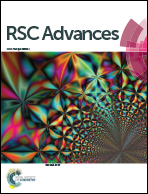Structure-based prediction of CAD response factors of dammarane-type tetracyclic triterpenoid saponins and its application to the analysis of saponin contents in raw and processed Panax notoginseng†
Abstract
The analysis of saponin contents in Panax notoginseng (Sanqi) is challenged by the lack of authentic reference standards. In this study, a gradient eluted HPLC method coupled with charged aerosol detector (CAD) has been established to solve this problem. The impact of structural features, including the type of aglycon, the optical rotations at C-20, the glycosyl substituent and the glycosyl linkage of dammarane-type tetracyclic triterpenoid saponins on their CAD response factors has been discovered. The rules of the impact have been utilized to predict CAD response factors of saponins in raw and processed notoginseng based on their structures elucidated by LC-QTOFMS. An intensive investigation of the saponin contents in raw (different cultivate places, sizes, and medicinal parts) and processed (steaming, baking, autoclaving, stewing and frying) Panax notoginseng were implemented. This method was successfully applied to distinguishing the quality of raw and processed Panax notoginseng, finding out biomarkers in processed notoginseng, and screening the best processing technique for this herb.


 Please wait while we load your content...
Please wait while we load your content...